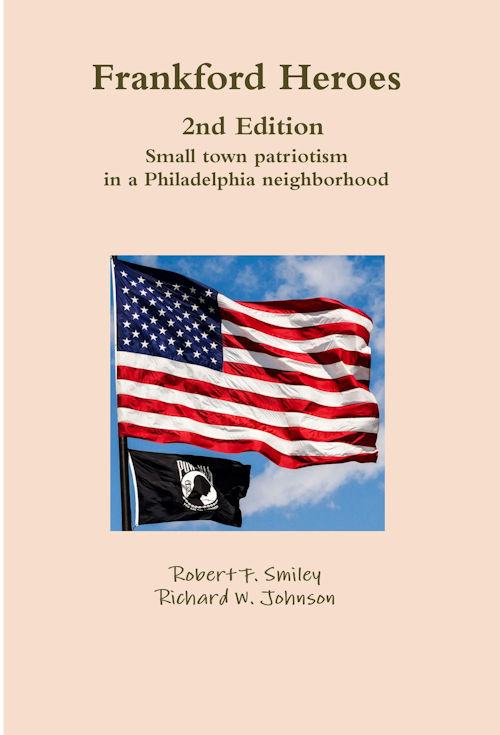September 13th, marked the formal completion of the Frankford murals project. There was a symbolic ribbon cutting in Womrath Park on that day with many of the people present who made the project a reality. It all started at the instigation of Councilwoman Maria Quinones-Sanchez almost two years ago.
At the initial community meeting on October 5th 2011, at Denby’s Café and Bakery on Frankford Avenue, there was enthusiasm mixed with skepticism. Community residents were excited about something positive coming to Frankford but could not quite picture how it was going to work out.
 Over the course of the next few months, project manager Netanel Poitier and muralist Cesar Viveros, made presentations at every community group meeting. They talked about the project but mostly they listened to residents’ concerns, hopes, fears and vision for Frankford.
Over the course of the next few months, project manager Netanel Poitier and muralist Cesar Viveros, made presentations at every community group meeting. They talked about the project but mostly they listened to residents’ concerns, hopes, fears and vision for Frankford.
Over 50 interviews with residents were conducted and recorded on video which are available at http://www.youtube.com/user/ImaginingFrankford. The muralist, Cesar Viveros, impressed residents with his dedication to listening to their stories. Those stories became concepts to be incorporated into the Murals. (Those videos are a valuable resource for future historians who will look back at Frankford at this critical turning point. They will be turned over to the Frankford Historical Society for storage in their archive.)
At each stage of the planning process, concepts for the murals were presented at community meetings. The ideas evolved and developed as Cesar listened and learned more about Frankford’s rich history and culture. Residents gave feedback and those ideas were then incorporated into the next stages of the design. Final designs were then approved by the community members and the mural arts committee.
The actual process of creating a mural is fascinating. When the final design was approved, Cesar then would begin the painting. The image is first projected onto a large piece of sail cloth. He then painstakingly outlined the image in pencil and coded the colors that would go into each segment. A mural may in fact be composed of as many as 20 of those panels.
Community residents were then invited to come to a painting event to actually paint the murals. As many as 30 people spent hours bent over tables at 2nd Baptist and St. Mark’s Churches applying the paint to the panels.
At the same time, the wall had to be prepared and in some cases repaired, to receive the panels. Then the job of applying the panels to the wall would find Cesar and his assistants on a lift 30 feet off the ground. The panels were affixed to the wall and then the final job of matching each panel up with its neighbor began and making those many individual pieces into one very large image. That process took several weeks for the large murals.
The result is a group of murals surrounding Womrath Park (4100 block of Kensington Ave. and 4200 block of Frankford Ave.) and a single large mural a few block north at St. Mark’s Church at 4435 Frankford Ave.
Womrath Park sits at the southern boundary of Frankford and is a gateway to the community. The murals at that location now offer an introduction to the area for visitors as well as a focal point for future community events.
All of the murals are visible from the ground and also from the Frankford El. Since many people never see Frankford up close, visibility of the murals from the El was considered highly desirable.
The project’s themes of History, Potential, Pride, Community and Family came directly from the resident interviews conducted in the beginning. Each mural reflects in some way, one or more of those themes.
The murals have now moved from possibility to reality and have become part of the neighborhood. The success of the project may be measured by resident’s comments when they look up at them. They see people and try to identify them. Scenes portray a time much different than present day and some may not realize that there once was a vital textile industry in Frankford. Soldiers march in formation and other people do not know that George Washington marched his troops to a victory at Lexington down what was the King’s Highway which is now called Frankford Avenue. A young shooting victim is memorialized in his football uniform. Butch Ballard, a great jazz drummer from Frankford looks down. Al Angelo, legendary Frankford High School football coach stands together with Billy Gambrel, namesake of Gambrel Recreation Center. Many community residents are portrayed in the context of the present day. There may even be one of the Continental troops who strongly resembles a local historian.
The murals teach the past and give hope for the future. They have become a source of pride and also educational opportunities that have made people think about where they live in a different way. The mural arts project may well have been a transformative event for Frankford.




